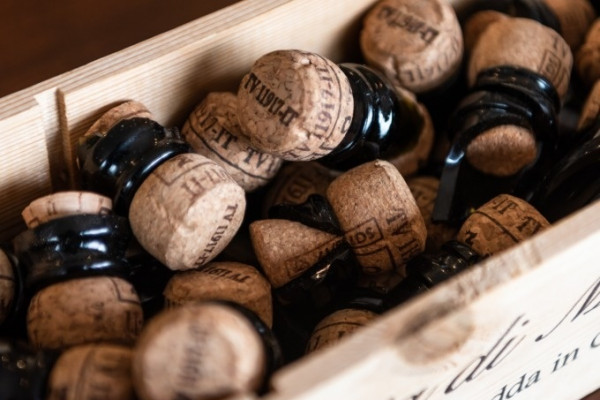
Have you ever wondered what is actually the composition of wine?
Let’s analyze it together in this article and let’s try to make things clearer.
First of all we should make clear that wine is a solution in which are dissolved more than 600 substances.
Some of them derive, of course, from grapes, others from fermentation processes.
Other substances are formed during the years – during the aging in cask and during the aging in bottle.
The wine will get richer in nuances, the bouquet will get more complex. The story of our greatest bottle.
What does color depend on?
Depending on the type of wine, color depends on the quantity of “coloring substances”, or better to say, pigments of the type of grape used.
Moreover, it also depends on the level of ripeness of the grapes and, of course, the time of contact between skins and juice during fermentation.
What about the container used? What role does it play?
We can safely say the role played by the “container” is of vital importance and it affects in a very important way the color of our wine.
Many Different Shades..
Let’s now try to understand, according to the type of wine, what kind of colors and nuances we can find.
We can say that in a young red wine the nuances are strongly influenced by the strong acidity (when young) and by the low ph.
Obviously with the passing of years we will see a change towards garnet hues and subsequently (during the phase of full maturity) to orange nuances.
What about white wines?
In an extremely young wine we will see a color tending to straw yellow which will mature and will move to warm and intense tones (almost amber colored) with the natural evolution and the passing of time.
Aromas
Perfumed substances coming from grapes are called primary or parietal aromas.
If we want to go into details, they derive from chemical groups such as terpenes and norisoprenoids and they will give wine a fruity and young smell, as well as a vegetal or mineral one.
The closer we are to the moment of harvesting, the more our perception will be connected to an aroma of fruit.
Secondary aromas are formed during the fermentation process, therefore we will be able to perceive aromas that will remind us flowers and aromas having a more herbaceous taste.
When the wine has been aged for years, its bouquet will speak in a much more complex way.
This is why tertiary aromas will appear – mixtures of esters, ethers and acetals.
Spicy notes, toasted notes up to more animal scents.
For the wonders of taste, we will dedicate the next article.
Do not miss it!






Leave a Reply